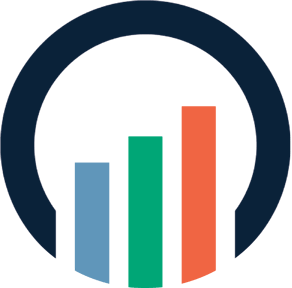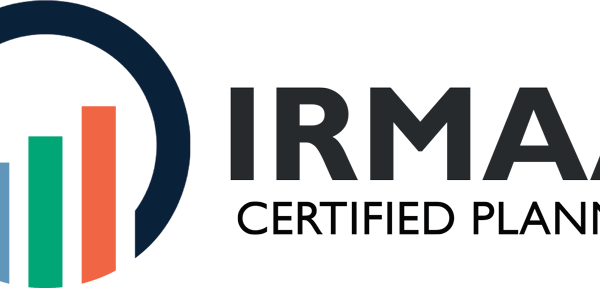It was a balmy Tuesday when I found myself sitting across from my aging mother, her furrowed brows echoing the confusion brewing in my own mind. We were attempting to navigate through the labyrinth of how Medicare premium is calculated. The daunting jargon seemed like an impenetrable wall.
“Mom,” I said, “Let’s take this step by step.”
The story began with understanding that most beneficiaries pay around 25% of their Part B premiums. But there are variables like income and late enrollment penalties that can change these numbers significantly.
We soon learned about concepts such as Income-Related Monthly Adjustment Amount (IRMAA) which could lead to higher premiums for high-income beneficiaries. And how your tax return data played a pivotal role in determining those costs.
Have you ever been in a predicament? It’s a feeling that is shared by numerous individuals.
Understanding Medicare Premium Calculation
Your monthly Medicare premium isn’t pulled out of a hat. It’s calculated using several key factors like your income level and the type of coverage you choose. But don’t worry, we’ll break it down for you.
Medicare Basics: The What and Why
First things first, let’s understand what Medicare is. Simply put, it’s health insurance provided by the federal government primarily for folks aged 65 or older.
This program helps pay for many medical services including outpatient care and prescription drugs but requires beneficiaries to contribute through premiums that vary depending on certain conditions.
The Role of Income in Calculating Your Premium
In most cases, if you’re receiving Social Security benefits, your Part B (medical insurance) premium will be automatically deducted from your monthly benefit payment. However, higher-income individuals might have to pay more than others due to something called an “income-related monthly adjustment amount” or IRMAA which is based on their modified adjusted gross income reported two years prior.
Stat Attack:
In fact, according to the official ‘Medicare & You Handbook’, most beneficiaries end up paying about 25% of the Part B cost while Uncle Sam foots around 75%.
Making Sense Out Of Modified Adjusted Gross Income (MAGI)
Your MAGI plays a significant role in determining whether or not you’ll face higher premiums because it directly influences IRMAA calculations. Here’s how: The IRS adds back some normally untaxed portions such as foreign-earned income and tax-exempt interest to your adjusted gross income, forming your MAGI.
If you’re a single taxpayer with an income above $91k or a married couple earning over $182k (for 2023), then you’ll be placed in the higher premium range according to your MAGI. And remember, Medicare uses the federal tax return filed two years ago to determine these figures.
Key Takeaway:
income. Remember, Medicare isn’t a one-size-fits-all deal. Your premium depends on your financial situation and the kind of coverage you need. If you’re making more money, you might have to pay an “Income-Related Monthly Adjustment Amount” or IRMAA. This adjustment is figured out using your modified adjusted gross income – so if you’ve got a high income, get ready to fork over some extra cash for your healthcare.
Income-Related Monthly Adjustment Amount (IRMAA)
The Income-Related Monthly Adjustment Amount, better known as IRMAA, is a key player in determining your Medicare premium. It’s like the conductor of an orchestra – it sets the tempo and everyone else follows.
If you’re asking “What is the Income-Related Monthly Adjustment Amount (IRMAA)?”, think of it as an additional charge added to your monthly Medicare Part B and prescription drug coverage premiums if your income exceeds certain thresholds. This isn’t just some random number pulled out from a hat; rather, it’s based on modified adjusted gross income reported on federal tax returns two years prior.
You might be wondering: “How does IRMAA affect Medicare premiums?”. Well, higher-income beneficiaries may pay a larger percentage of their Part B premium because of this adjustment – ranging anywhere from 35% to 85%. That’s quite a jump. Think about running up steps instead of walking them; that’s how fast these costs can escalate for those with high incomes.
Medicare Part B helps pay for medical services like doctors’ visits and outpatient care but remember: where there are benefits, there are also costs involved.
Explaining the impact of IRMAA on Medicare premiums
This adjustment means that not all folks get away with paying standard amounts. Let me paint you a picture here: Imagine going grocery shopping believing bananas cost $1 per pound only to find they’ve suddenly spiked to $5 per pound. You’d be shocked right? Similarly, people who thought they’d pay standard Medicare prices might feel taken aback when they see higher charges due to IRMAA.
income over $176,000, you might be subject to this adjustment. This is how IRMAA plays a part in deciding your Medicare premium. It’s imperative to be informed of this so as to avert any unforeseen expenditure related to healthcare.
Key Takeaway:
IRMAA’s Role in Medicare Premiums: IRMAA, or the Income-Related Monthly Adjustment Amount, plays a big role in your Medicare premiums. If you’re pulling in more than certain income limits, this extra fee bumps up your Part B and prescription drug coverage expenses. But it doesn’t come out of nowhere – it’s tied to what your modified adjusted gross income was two years ago.
Factors Affecting Medicare Premium Calculation
Your Medicare premium isn’t pulled out of thin air. It’s actually based on a mix of various factors, such as your tax return and gross income. Let me share some insider info from my years working in the industry.
Impact of Gross Income
The amount you shell out for your Medicare charges each month is linked to the size of your gross earnings. Your earnings are directly tied to how much you contribute towards medical services like outpatient care that are covered by Part B premiums.
If you think about it, this is similar to how ordering extra toppings on a pizza affects its cost – more ingredients mean a pricier pie. Likewise, higher income leads to heftier medicare premiums because there’s an assumption that those earning more can afford to chip in extra for their healthcare coverage.
Role of Adjusted Gross Income (AGI)
Moving beyond just raw earnings figures, we also have AGI playing a significant part in determining your medicare premiums. This figure includes not only wages but also other forms of incomes such as dividends or rents from an income-producing property if any.
To put it into perspective, imagine going grocery shopping with a $100 budget but after factoring taxes and fees, what remains for actual groceries might be around $85 or so. Similarly, AGI considers all sources of revenue before accounting deductions, which then influences the calculation made by Centers for Medicaid Services when setting up premium amounts each year.
This modified adjusted gross plays quite the role too, especially when dealing with IRMAA-Income Related Monthly Adjustment Amounts. Essentially, high earners may need to pay an additional premium on top of their base Medicare Part B and prescription drug coverage premiums.
For example, if the modified adjusted gross income reported on your federal tax return from two years ago exceeds certain thresholds, you may end up paying higher premiums. It’s akin to finding yourself unexpectedly upgraded to first class.
Key Takeaway:
Your Medicare premium isn’t just random; it’s shaped by factors like your tax return and gross income. Higher earnings often mean higher premiums, similar to how extra pizza toppings increase the price. Also, your Adjusted Gross Income (AGI), which includes all revenue sources before deductions, plays a big part in setting up annual premium amounts.
Medicare Part B Premium Calculation
Understanding how your Medicare Part B premium is calculated can feel like navigating a maze. But, don’t worry. We’re here to shed some light on the matter.
Calculation of Part B Premiums
The standard Part B premium for 2023 is $164.90 per month. This amount isn’t arbitrary but based on several factors tied to your financial situation and timing of enrollment.
You might be asking: “How is the Medicare Part B premium calculated?” The answer lies primarily in income levels and late enrollment penalties. If you delay signing up for part B after becoming eligible, an additional 10% gets added for each year of delay.
Factors Influencing Part B Premiums
Different elements come into play when determining what you pay monthly. Let’s look at two major ones:
- Your Income Level:
- If your reported income from two years prior exceeds certain thresholds (as stated by IRS), expect to pay more than just the base rate due to something called IRMAA – Income-Related Monthly Adjustment Amount.
- Late Enrollment Penalties:
- If you didn’t sign up during initial eligibility period without qualifying special circumstances, get ready because there’s going to be a penalty fee attached which increases with time.
Remember, understanding the calculation of Part B premiums can help you plan better for your healthcare expenses. Nobody desires to spend more than necessary.
An overview of income-related adjustments to Part B premiums reveals a progressive structure where higher-income individuals bear a larger portion of Medicare’s total costs. So keep an eye on that tax return filed two years ago. It could influence your premium today.
Medicare Prescription Drug Coverage Premium Calculation
You could have seen that your premiums can vary if you’re a Medicare recipient with drug coverage. This isn’t arbitrary; it’s tied to several key factors, one of which is income.
The Role of Income in Determining Your Premiums
Income plays a significant role in how the Medicare premium for prescription drug coverage is calculated. Higher-income beneficiaries may be required to pay extra monthly premiums based on their reported income. So how does this work?
Your modified adjusted gross income (MAGI) from two years prior – data obtained from your federal tax return filed with the IRS – serves as the basis for determining these adjustments to plan costs.
Premium Adjustments and IRMAA
Apart from base premium amounts set by individual plans themselves, there’s an extra factor at play: the Income-Related Monthly Adjustment Amount (IRMAA). The IRMAA essentially means that beneficiaries with higher incomes pay more for their prescription drug plan costs vary depending on their reported MAGI.
Finding Out About Additional Premium Costs
You’ll be informed about any additional premium amounts through an “income-related monthly adjustment amount (IRMAA)” notice sent by Social Security or Railroad Retirement Board each year around November/December time frame.
Note: You don’t need to apply separately if already enrolled in Part D; this adjustment happens automatically.
Making Sense of It All: An Example
Let’s consider an example. If you’re a single filer with a modified adjusted gross income of $91,000 in 2023, your reported income would place you into the second IRMAA tier for 2023 prescription drug coverage. This means that on top of your plan’s base premium, there is an extra monthly adjustment amount added.
Key Takeaway:
Your Medicare prescription drug coverage premium isn’t just a random number. It’s influenced by factors like your income from two years ago and an extra charge called the Income-Related Monthly Adjustment Amount (IRMAA) if you’re a higher-income beneficiary. You’ll know about any additional costs through an IRMAA notice sent out each year.
Impact of Income Changes on Medicare Premiums
If you’ve ever asked, “How do income changes affect Medicare premiums?”, then this section is for you. Let’s examine how fluctuations in your earnings can sway the amount you pay monthly for Medicare.
Effect of Income Changes
Your tax return plays a pivotal role here. The federal government uses your modified adjusted gross income (MAGI) from two years prior to determine your premium cost. So, if we’re talking about 2023 premiums, they’ll look at your 2023 tax return filed.
The logic behind this? Your MAGI gives a snapshot of what you earned during that year – both wages and investment income included. And it’s not just any figure; it represents an accurate depiction of economic wellbeing that the Centers for Medicaid Services use to set medicare premiums.
Higher-income beneficiaries, those with MAGIs over $88k as individuals or $176k filing jointly, often have additional costs tagged onto their base premium due to the Income-Related Monthly Adjustment Amount (IRMAA).
Navigating Through IRMAA Adjustments
The name might sound intimidating but let me break down IRMAA into bite-sized pieces: It’s simply an extra charge added to Parts B and D if your reported income surpasses certain thresholds – kind of like getting moved up a tax bracket because Uncle Sam noticed you’re making more dough.
| Income Brackets & Corresponding Percentages Paid by Beneficiaries | |||
|---|---|---|---|
| Individuals | Couples Filing Jointly | % of Part B Cost Paid | Explore More on Additional Monthly Premium for Drug Plans |
FAQs in Relation to How is Medicare Premium Calculated
What income is used to calculate Medicare premium?
Your Modified Adjusted Gross Income (MAGI) from your tax return two years prior is used to determine your Medicare premium.
What income is used to determine Medicare premiums 2024?
To figure out the 2024 Medicare premiums, they’ll look at your MAGI reported on your 2023 federal tax return.
What income level triggers higher Medicare premiums?
If you’re single and make over $88k or married making over $176k, you’ll have higher monthly payments for Part B and D of medicare.
How are Medicare Part B premiums calculated?
The government pays about 75% of the cost while most beneficiaries cover around 25%. But if you’re high-income, it can range between a whopping 35%-85% based on what IRS says about your dough.
Conclusion
It’s a wrap! By now, you should have a clear understanding of how Medicare premium is calculated. You’ve seen how most beneficiaries pay around 25% of their Part B premiums. But it doesn’t stop there.
You learned about the Income-Related Monthly Adjustment Amount (IRMAA) and its potential to raise premiums for higher-income beneficiaries. And you realized that tax return data plays an important role in determining these costs.
If late enrollment was on your mind, we got that covered too! The penalties can indeed inflate monthly payments, so timely action matters.
All this knowledge equips you better to navigate the labyrinth of Medicare premiums. Remember – knowing where the turns are makes any maze less daunting!
Table of Contents:
- Understanding Medicare Premium Calculation
- Income-Related Monthly Adjustment Amount (IRMAA)
- Factors Affecting Medicare Premium Calculation
- Medicare Part B Premium Calculation
- Medicare Prescription Drug Coverage Premium Calculation
- Impact of Income Changes on Medicare Premiums
- FAQs in Relation to How is Medicare Premium Calculated
- Conclusion
Streamlining the Medicare Surcharge Calculation Process.
Our Healthcare Retirement Planner software is designed to streamline the retirement planning process for financial professionals. By providing an efficient way to calculate IRMAA costs, our tool helps you save time and focus on other aspects of your clients’ retirement plans.
- Faster calculations: Our software quickly calculates IRMAA costs based on your client’s income and tax filing status, eliminating manual calculations and potential errors.
- User-friendly interface: The intuitive design of our platform makes it easy for financial professionals to input data and generate results with minimal effort.
- Data integration: Seamlessly integrate our calculator into your existing financial planning tools or CRM systems for a more streamlined workflow.
- Easy to Understand Reports: Export reports to easily share with your clients
- Tax and Surcharge Modeling: see how different types of income affects both taxes and your surcharges.
In addition to simplifying the calculation process, using our Healthcare Retirement Planner can also help improve communication between you and your clients. With clear visuals that illustrate how IRMAA costs impact their overall retirement plan, you can effectively convey complex information in an easily digestible format. This enables clients to make informed decisions about their healthcare expenses during retirement while ensuring they are prepared for any potential changes in Medicare premiums due to income fluctuations. To learn more about how our software can benefit both you as a financial professional and your clients’ retirement planning experience, visit the features page. Streamlining retirement planning processes can help financial professionals save time and resources, allowing them to focus on other areas of their clients’ needs. Automated calculation of IRMAA costs is the next step in streamlining this process even further.






